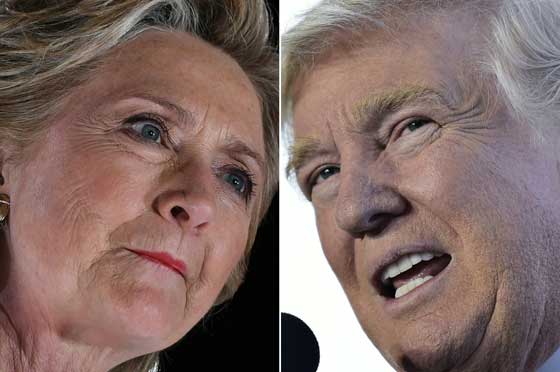THE United States’ complicated electoral college system favors Democrat Hillary Clinton on the eve of Tuesday’s watershed polls, even as Republican rival Donald Trump has managed to close the gap in national surveys.
The victor must get to the magic number of 270 electoral college votes on election night (Wednesday morning in Manila).
Clinton already has a lock on 115 votes, and the number could go well past the winning threshold to 297 votes, based on state-by-state opinion poll averages where the Democratic presidential contender leads, data from the Real Clear Politics website showed.
Only 63 electoral votes can be considered safe for Trump at this point, and based on Real Clear Politics state averages, the property mogul could end up short at just 241 votes.
Clinton’s base is the traditionally Democratic coastal states with large and racially diverse urban populations that President Barack Obama won in 2008 and 2012, while Trump is leaning on the so-called “red states” or the middle of the country that is the stronghold of socially conservative voters.
But the race remains a tight one, and 14 states – equivalent to 158 electoral votes – are still considered toss-ups where the candidates are in statistical dead heat.
These are Florida (29 electoral votes), Ohio (18), Michigan (16), Pennsylvania (20), New Hampshire (4), Maine’s second congressional district (1), Maine (2), North Carolina (15), Georgia (16), Colorado (9), Nevada (6), Arizona (11), New Mexico (5) and Iowa (6).
A Trump breakout in these states will bring him to the White House on January 20.
A total of 538 electoral votes are in play, corresponding to the total number of elected representatives in Congress (435 members of the House and 100 senators) plus three for the US capital Washington, D.C. Just trying to anticipate the result is a complicated exercise in adding, subtracting and combining.
Florida is the mother of all swing states, with 29 electoral votes. It can make or break a candidate, as in 2000, when a few hundred votes separated eventual president George W. Bush and Democratic contender Al Gore.
Potentially, candidates could also forge a path to 270 by winning enough small states such as Nevada, Iowa and New Hampshire – or by winning a state that’s historically voted for the opposing camp.
Nevada could tilt the election this year, according to a report by The New York Times.
Trump, the paper said, would still fall short even if he won Arizona, Iowa, Ohio, Utah, North Carolina, Florida and New Hampshire. Aside from these seven states, Trump needs to win any of the following: Pennsylvania, Nevada, Michigan, Wisconsin, Colorado, Virginia, or New Mexico or Minnesota, where Clinton mostly has the edge.
Trump is said to have a fighting change in Nevada, but on Sunday, reports emerged of a huge Latino turnout that could swing the state that hosts casino capital Las Vegas to Clinton’s column.
On Sunday, Clinton held a thin 1.7-percent lead in the Real Clear Politics national average of polls, with 46.6 percent versus Trump’s 44.9 percent.



